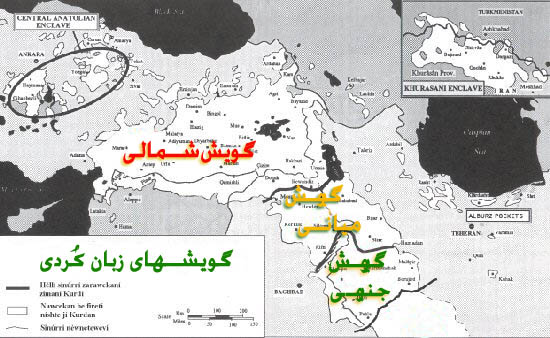Why does the Kurdish Unified Scripting System not use “Ch” instead of /C/ like in English or just /ç/ like in Turkish, North Kurdish (Kurmanjí) and French?
Why does the Kurdish Unified Scripting System not use “Ch” instead of /C/ like in English or just /ç/ like in Turkish, North Kurdish (Kurmanjí) and French?
Why does the Kurdish Unified Scripting System not use “Ch” instead of /C/ like in English or just /ç/ like in Turkish, North Kurdish (Kurmanjí) and French?
According to the phonology of the English language the character /c/ has been defined for sound “si” and when it comes with /h/ it will make the new combined character “ch” with a new sound. The same combination in German, French, Italian and Dutch sounds different. If you define character /c/ in Kurdish like in English you will be able to make the same argument as for English. But since the bases are built up so that they make sense phonologically in the Kurdish language from the point of view of learners with no foreign language backgrounds, this cannot be a choice. The letter /c/ in the Yekgirtú scripting code might on the other hand be argued as /c/ in Italian, for those who are familiar with the Italian language.
The character /ç/ is not the standard character, which comes alone with keyboards, and it will create same problem as the cases of single letter representing of velar /l/ and trill /r/. The character /ç/ is the extension character on ISO-8859-1, which needs a special key on a keyboard layout to be generated. Less complexity in character make the scripting system more friendly for users.
Do not forget that characters are the basic rules for writing and we introducing this to our coming generation. An adult person with background in several languages will always compare linguistic skills but a child have a mind of learning in easiest and most logical way.



